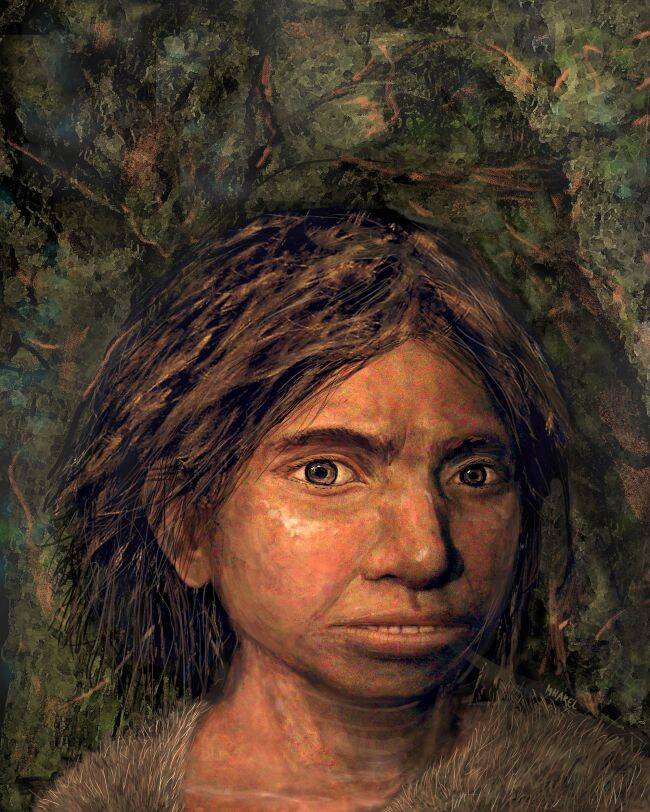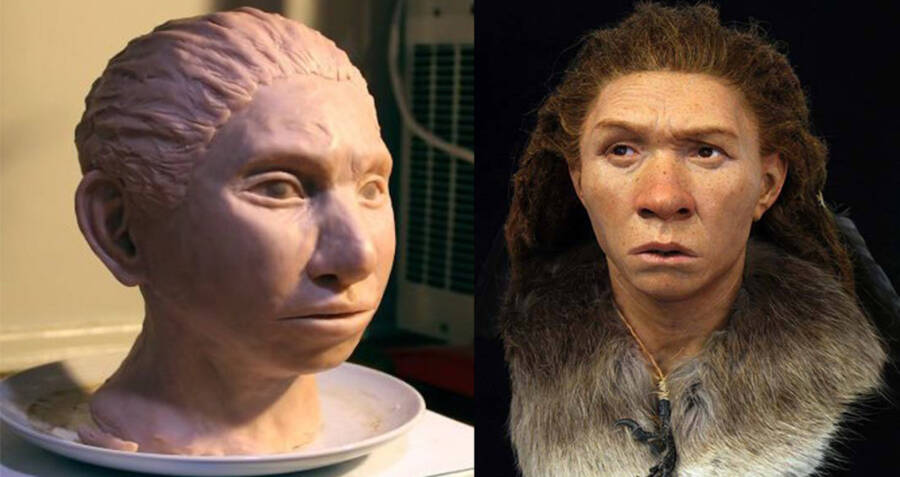When scientists first discovered these remains of a teenage girl in 2010, they knew that the history of early humans was about to be rewritten. Now we know what the face of a Denisovan actually looked like.

Maayan HarelAn artist’s rendering of the reconstructed face of a Denisovan girl.
It’s incredible what just a little bit of DNA can do. Scientists have successfully reconstructed, for the first time, what one of our archaic human ancestors may have looked like — using only fragments taken from a pinky bone.
According to Live Science, a new study by international researchers has created the first facial reconstruction of a teenage girl who lived in modern-day Siberia some 75,000 years ago and belonged to the Denisovan group of early humans.
During the study, published in the journal Cell, the researchers used “DNA methylation patterns” in order to reconstruct the skeletal morphology of this Denisovan girl.
Scientists were able to analyze the DNA patterns found in the tiny bit of genetic material that was recovered from the Denisovan girl’s pinky bone, which was discovered in a cave in Siberia in 2010. From there, they created a methyl map, which is a blueprint of how chemical changes to gene expression could influence physical traits in the Denisovan genome.
Researchers looked at the Denisovan DNA and compared their methylation patterns with those found in modern humans and in another one of our ancestors, the Neanderthals, and compared where the given gene expression overlapped and where they diverged.
To test the accuracy of their methodology, the scientists used the same method to reconstruct a Neanderthal human and a chimpanzee — both have skeletal morphologies which we are already familiar with. They found 85 percent precision in their method of identifying divergent traits.

Maayan HarelA 3D model of the Denisovan reconstruction.
Now, the resulting DNA-based reconstruction reveals the first-ever portrait of a Denisovan hominin.
“I was expecting Denisovan traits to be similar to Neanderthals, just because Neanderthals are their closest relatives,” lead study author David Gokhman, a geneticist at Stanford University, told Live Science. “But in the few traits where they differ, the differences are extreme.”
According to the study’s reconstruction, Denisovans likely shared some anatomical traits with the Neanderthals, such as an elongated face and a wide pelvis. But the researchers also identified distinct anatomical traits of the Denisovans, such as “an increased dental arch” (meaning their teeth jutted out farther) and “lateral cranial expansion” (they had wider skulls).
Before this research, not much was known about our Denisovan ancestors, mostly because researchers have only discovered a few fragmented remains. Besides the pinky finger, scientists also uncovered a jawbone and teeth but have yet to recover a complete skeleton.
What we do know, however, is that the Denisovans walked the earth up until some 15,000 years ago alongside the Neanderthals. Though physically similar, these two human species were genetically distinct.
Scientists believe that their genetic lineage split from their nearest common ancestor more than 500,000 years earlier. We know there was interspecies mating between these two hominins in the areas which now span from Siberia to Southeast Asia. This hybrid genetic line is still detectable in some populations today.

Maayan Harel/Royal Pavilion & Museums/Brighton & HoveThe reconstructed faces of a Denisovan (left) and a Neanderthal (right).
The accuracy of the study’s reconstruction prediction was tested again in May 2019, when a separate team of researchers identified a Denisovan jawbone for the first time. When Gokhman’s team compared their reconstruction to the discovered jawbone’s anatomy, they found that seven out of eight of their predictions matched the actual bones.
“The only true test of our predictions is to find more Denisovan bones and match them,” Gokhman said.
While this study is significant as the first reconstruction of the Denisovan species, it is not the first to have figured out what ancient humans possibly looked like. In 2018, scientists reconstructed a full-body model of a Neanderthal (based on 40,000-year-old bones found in Belgium) and Cro-Magnon, or an early modern human, species.
And in 2017, scientists reconstructed the face of a man that lived 9,500 years ago from a skull that was ritually buried in Jericho.
And as more Denisovan remains are unearthed, the picture of these mysterious early humans will surely only become more clear.
Next, take a look at these reconstructed faces of ancient people, from the Neanderthals to Jesus. Then, read about the mysterious “ghost” DNA among West Africa’s Yoruba population that can’t be linked to any known human ancestor.





